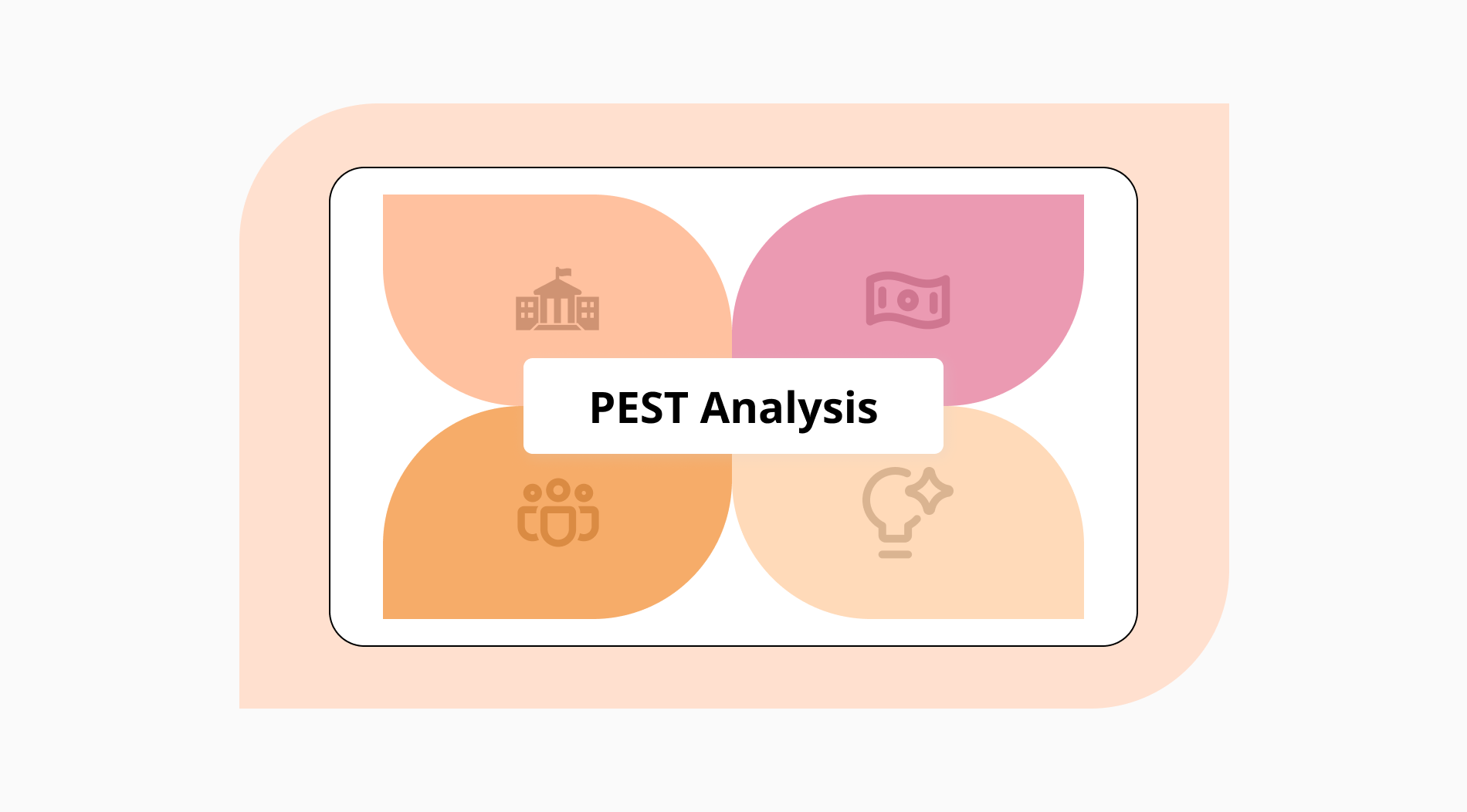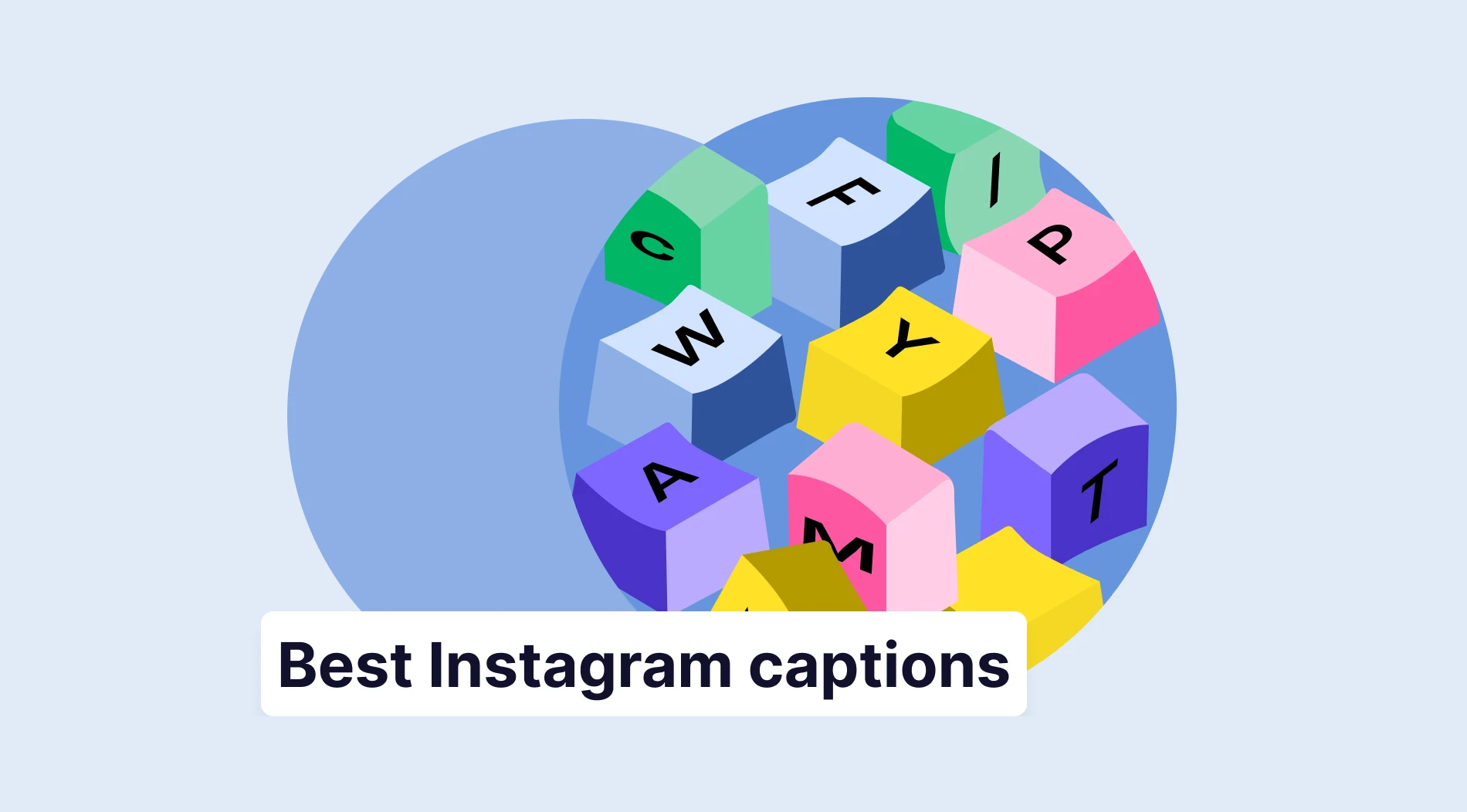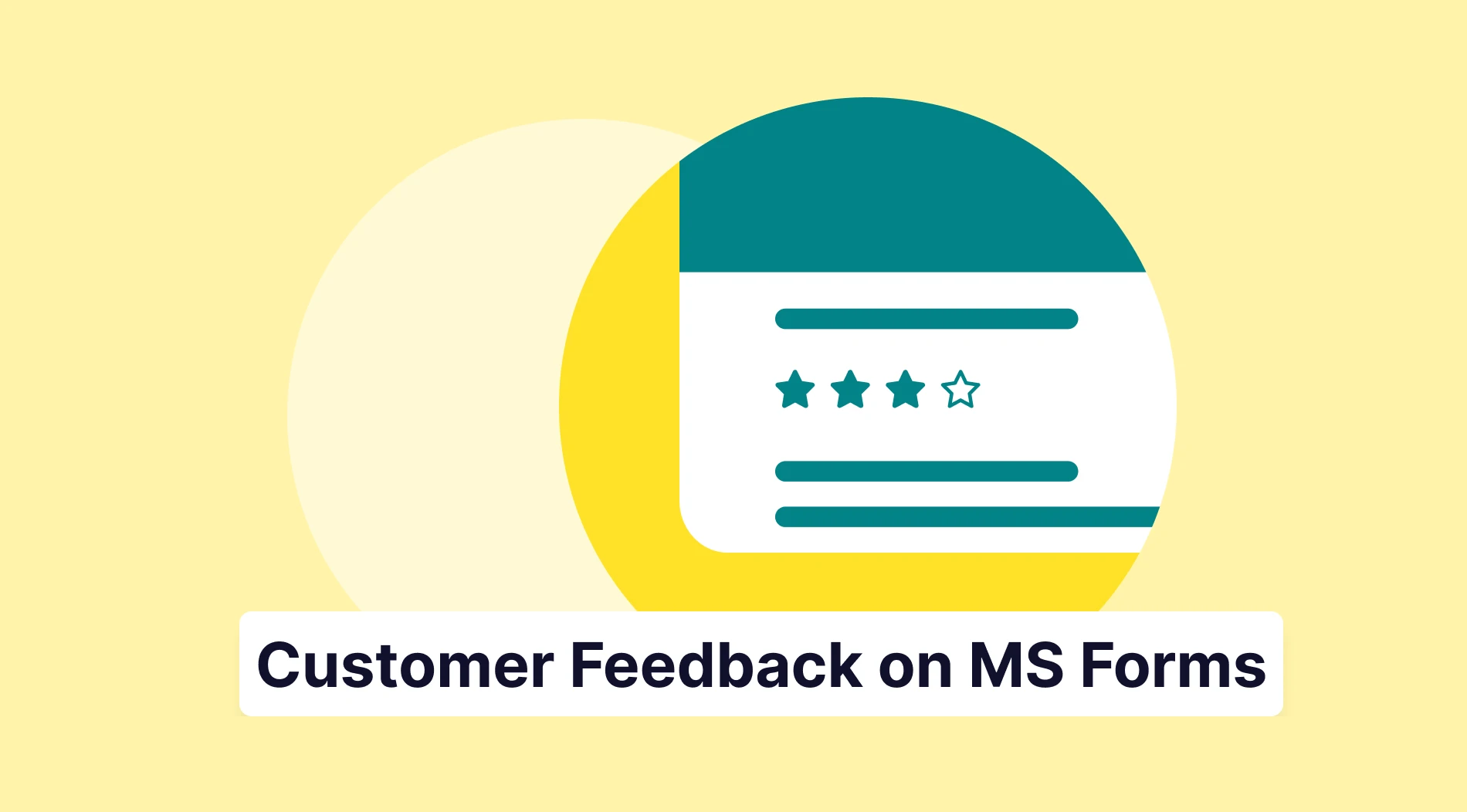We live in a world where decision-making and performance parameters have become important for our businesses. Models and analyses are crucial for obtaining better results from our strategies. Strategic planning tools are available for analyzing the external factors affecting an organization or a company’s operations.
Today, we will cover one of these valuable tools, the PEST Analysis. It is a good framework to use for identifying the macro-environmental factors affecting your business strategies and decisions. This article will help you to get a comprehensive understanding of the model. You will see PEST analysis’ definition, its benefits, its useful environments, examples, and all other detailed aspects.
What does PEST analysis mean?
PEST analysis is a strategic tool used by organizations and helps them analyze and understand the external factors that can impact their operations. PEST is an acronym and stands for Political, Economic, Social and Technological analysis.
Each letter represents a category of external factors that can influence a company’s operations and strategic decisions. The analysis involves identifying and evaluating these factors to understand the way business operates and anticipate potential opportunities and threats.
The origins of PEST analysis date back to the 1960s and 1970s, when academics began to recognize the importance of considering external factors in strategic planning. The analysis initially focused on Political and Economic factors, reflecting the political and economic situation of the time. Over the years, the framework evolved to include Social and Technological factors as well.
Why use the PEST analysis
PEST analysis is a versatile tool that helps organizations find solutions for the complexities of their business environment. By using the PEST analysis, companies can make more informed and proactive decisions to achieve their objectives. Here are some of the reasons to use the PEST analysis:
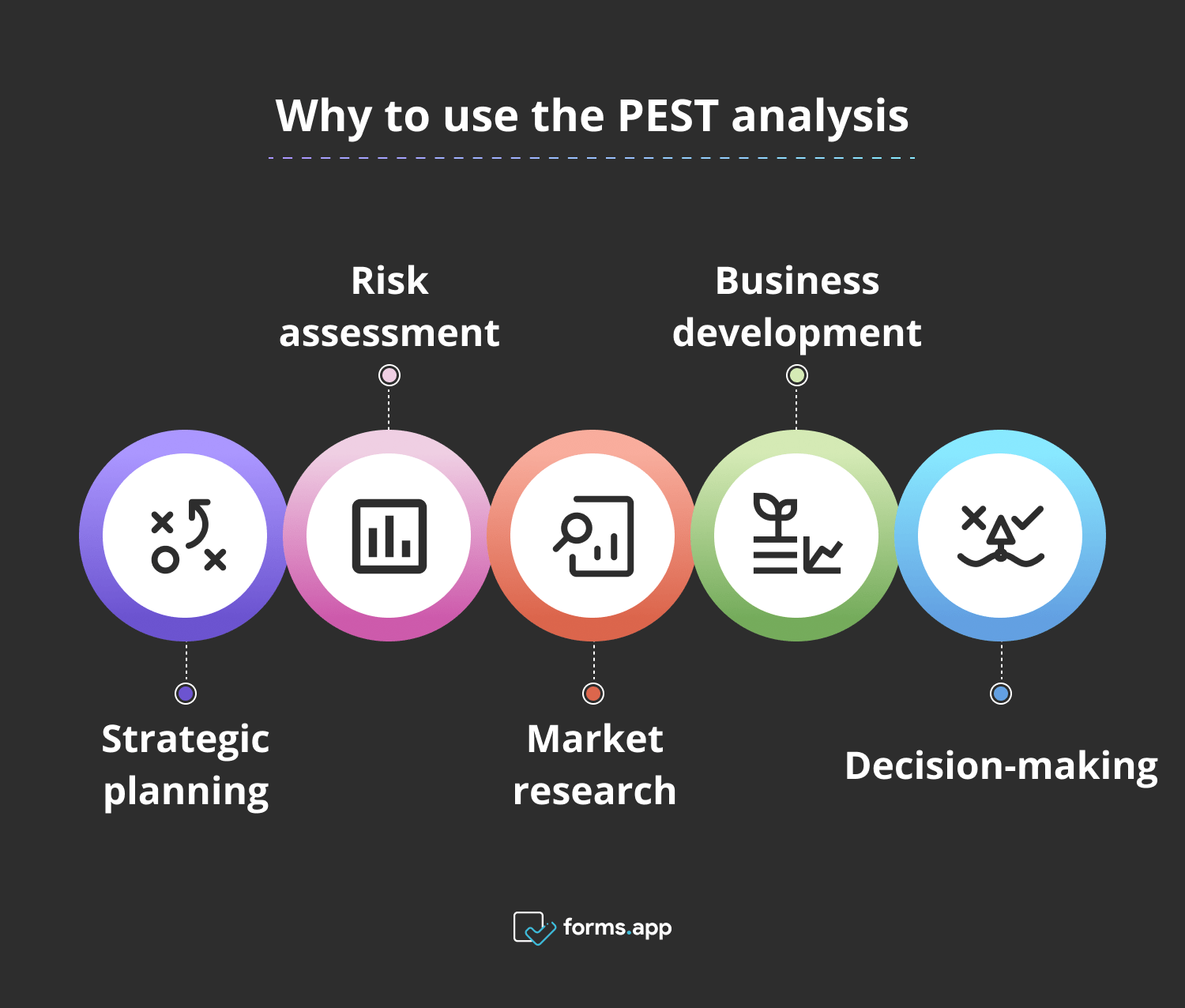
Reasons to use the PEST analysis
- Strategic planning: It helps organizations understand external factors. Those factors may impact their business environment. This enables them to develop more effective strategic plans.
- Risk assessment: By identifying potential opportunities and threats coming from political, economic, social and technological factors, companies can better assess and manage the risks.
- Market research: PEST analysis provides valuable insights into market trends, consumer behavior, and industry dynamics. It helps companies make proper decisions about market entry or expansion.
- Business development: It enables companies to identify new market opportunities and emerging trends as well as areas for innovation. The companies can sustain their business development goals.
- Decision-making: PEST analysis is a structured framework for decision-making and it helps organizations to prioritize their initiatives and allocate resources effectively.
PEST analysis
We have covered the PEST analysis description. Now, we can delve into the framework and get a detailed understanding of each factor. The PEST analysis consists of 4 macro-environmental factors. They affect businesses and help them identify the opportunities and threats:
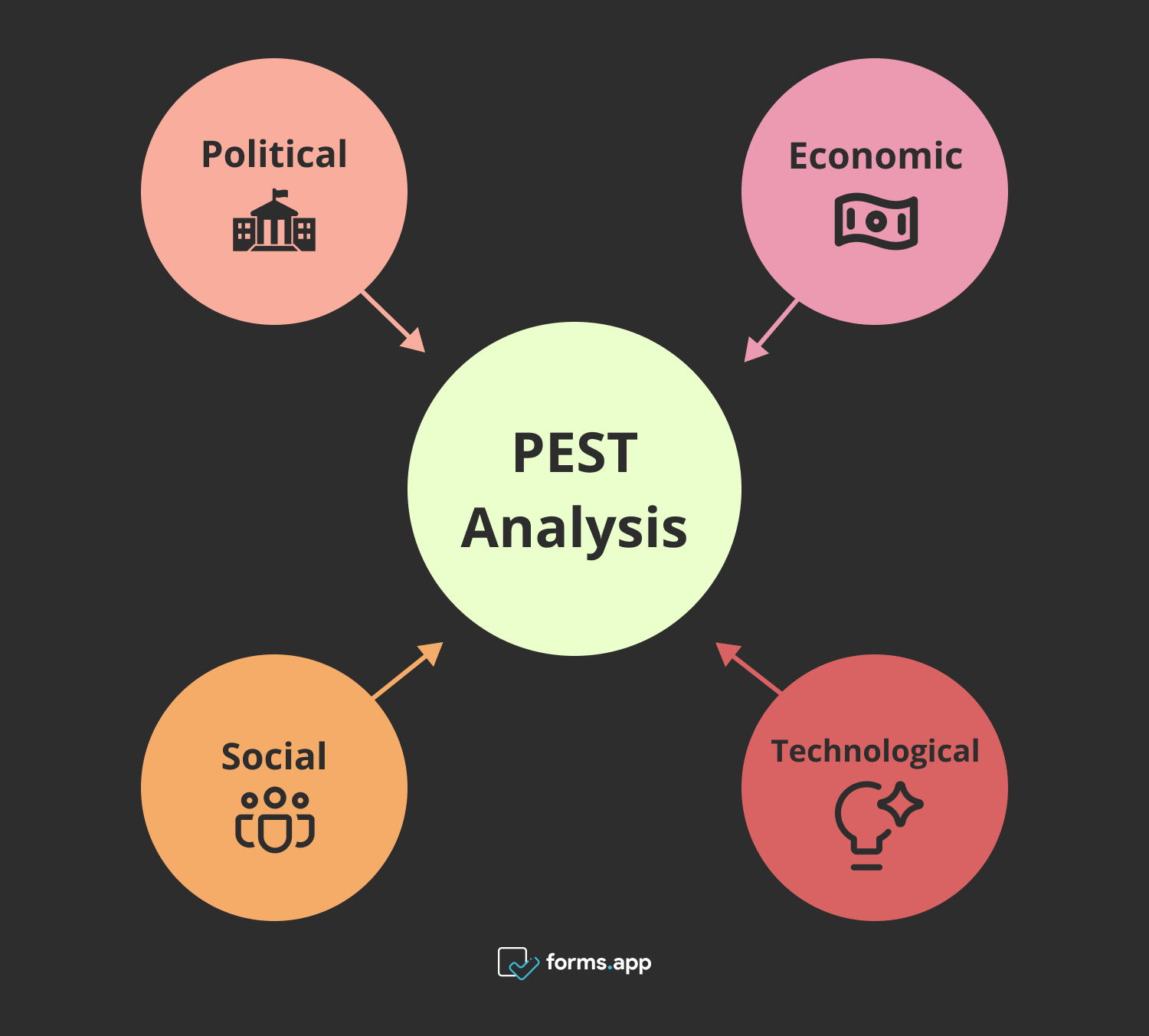
PEST analysis
1- Political factors
The political factors refer to the influence of government policies, regulations, and political stability on businesses. Some aspects that businesses can consider may include government stability and ideology, tax policies, trade restrictions and tariffs, and employment laws.
Legal and environmental factors/regulations and political stability in key markets also play a key role. They can be pretty useful in determining long-term political factors. Companies and organizations should closely track the political environment of the country in which they are a market player.
2- Economic factors
Economic factors focus on the broader economic conditions that can impact businesses. They can be economic growth rates, inflation rates, exchange rates, interest rates, and unemployment rates. Consumer confidence, spending patterns, and disposable income levels are also economic factors for businesses to consider.
Understanding and analyzing these economic factors enables businesses to identify opportunities and threats arising from the changes in the economy of the target market. Companies need to stay informed about economic trends and developments. They can adapt their strategies to navigate economic challenges and maintain the competition.
3- Social factors
Social factors include the demographic, cultural, and societal aspects that influence consumer behavior, preferences, and market trends. The social factors may vary. Population demographics and lifestyle trends are some of the social factors. We can also consider cultural norms and values and social media usage.
Companies should also consider the socio-cultural factors in the work environments. Analyzing these social factors enables businesses to protect themselves. They can avoid challenges arising from shifts in societal attitudes, behaviors and demographics. The companies need to keep track of social trends and preferences. They can revise their strategies to meet evolving consumer needs and preferences.
4- Technological factors
Technological factors involve the influence of advancements and innovations in technology on businesses and industries. These may be the rate of technological change, or research and development (R&D) activity. We can also consider automation and digital transformation trends, intellectual property protection and access to technology and infrastructure.
By understanding these technological factors as part of the PEST analysis, businesses can identify opportunities for innovation. They can also anticipate technological disruptions and develop strategies to benefit from technology for competitive advantage. Embracing technological change and investing in digital transformation will contribute a great deal to the business efforts.
PEST Analysis Examples
So far, we have covered the PEST framework analysis, its factors, and its advantages. We have discovered this useful model in detail. This model may be challenging to understand at first. But, it is actually easy to understand.
Now, we will look at how businesses use this analysis to develop their strategies. You will see some scenarios in which large corporations use the PEST analysis. Let’s look at some of the examples.
1- Hewlett-Packard (HP)
HP is a leading printer manufacturer in many countries. Let’s imagine a scenario where it uses PEST analysis to navigate external factors affecting its business landscape. In response to political changes, HP aligns its operations with evolving environmental regulations and emphasizes sustainable practices in manufacturing and recycling. Economic fluctuations prompt HP to adjust pricing strategies and introduce cost-effective printer models.
Moreover, HP addresses social trends by investing in eco-friendly technologies and engaging environmentally conscious consumers through social media. Technological advancements drive HP’s innovation efforts, leading to the development of wireless, mobile, and cloud-integrated printer solutions. By adapting to political, economic, socio-cultural, and technological factors, HP maintains its competitive edge and sustains growth in the dynamic printing industry.
2- Canon
Now, let’s think that Canon, a prominent manufacturer of photographic equipment, also uses PEST analysis. They monitor political changes in trade policies and regulations to ensure compliance. Economic indicators like exchange rates and consumer spending trends guide pricing strategies and product innovations. Societal trends, such as the rise of photography as a hobby, inform marketing efforts and social media engagement.
Additionally, Canon invests in research to stay ahead of technological advancements. It explores opportunities in emerging technologies like mirrorless cameras and AI to enhance product features and maintain technological leadership. Canon gains valuable insights into the external environment, enabling it to anticipate market trends, mitigate risks, and capitalize on opportunities for growth and innovation.
How to use the PEST analysis
We have witnessed how powerful the PEST analysis is when conducted in an effective manner. Large corporations and organizations may benefit a great deal from this analysis.
This analysis entails tracking political, economic, socio-cultural, and technological developments. There are steps to take when using it. Let’s see what those steps are:
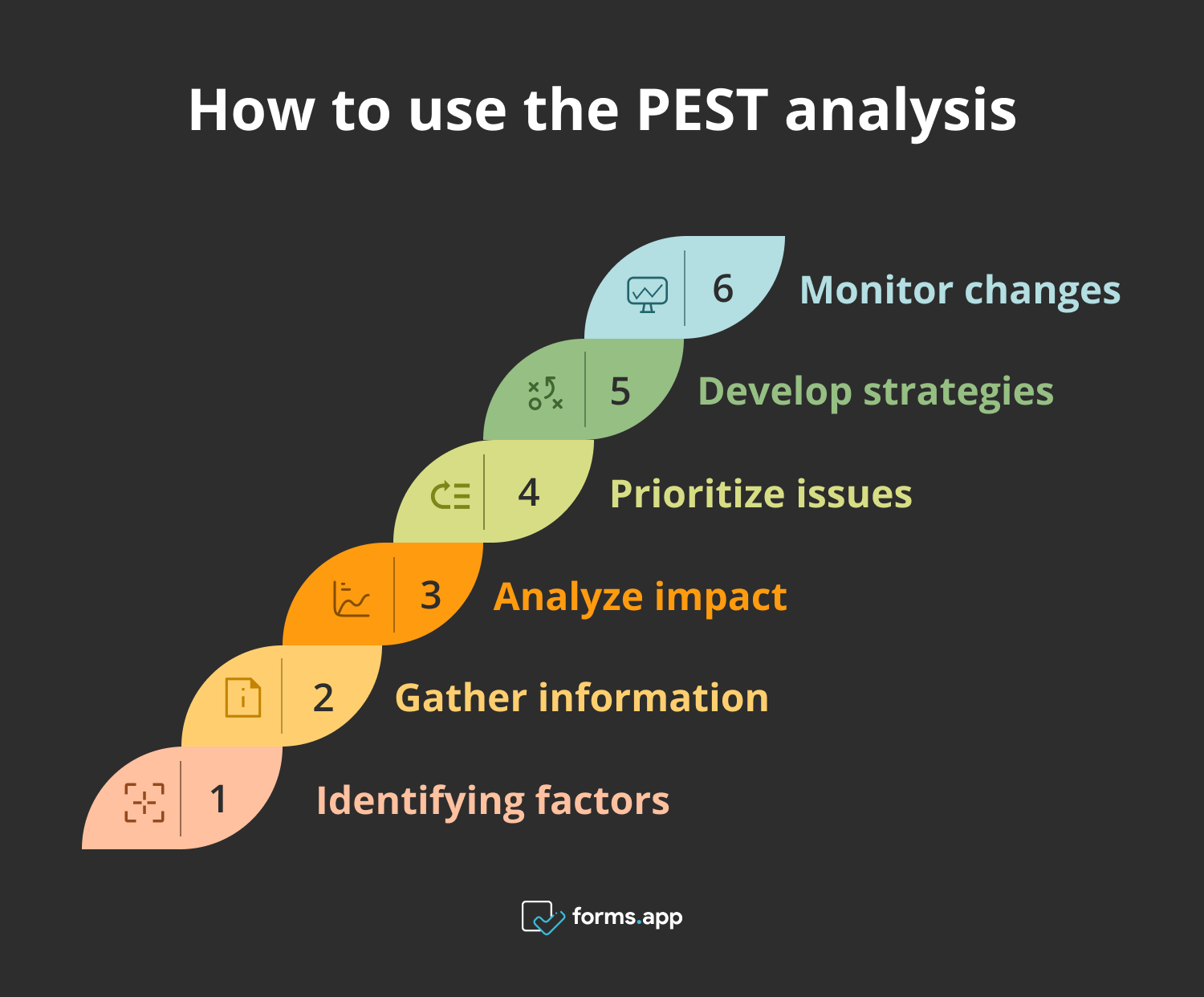
How to use the PEST analysis
- Identifying factors: Identify relevant political, economic, social, and technological factors affecting your business environment.
- Gather information: Collect data and information on each factor through research, industry reports, and market analysis.
- Analyze impact: Evaluate how each factor influences your business operations, market dynamics, and strategic decisions.
- Prioritize issues: Prioritize key factors based on their potential impact and significance to your business objectives.
- Develop strategies: Develop strategies to get opportunities and mitigate risks caused by identified factors.
- Monitor changes: Always keep track of changes in the external environment and adjust strategies accordingly to stay responsive.
When do you use the PEST analysis?
PEST analysis marketing is a valuable framework that many organizations and companies can use. It is important to know how and when to use this valuable tool. There is actually more than one instance where you can use the PEST analysis.
Those will help you mitigate the risks and leverage opportunities. They are as follows:
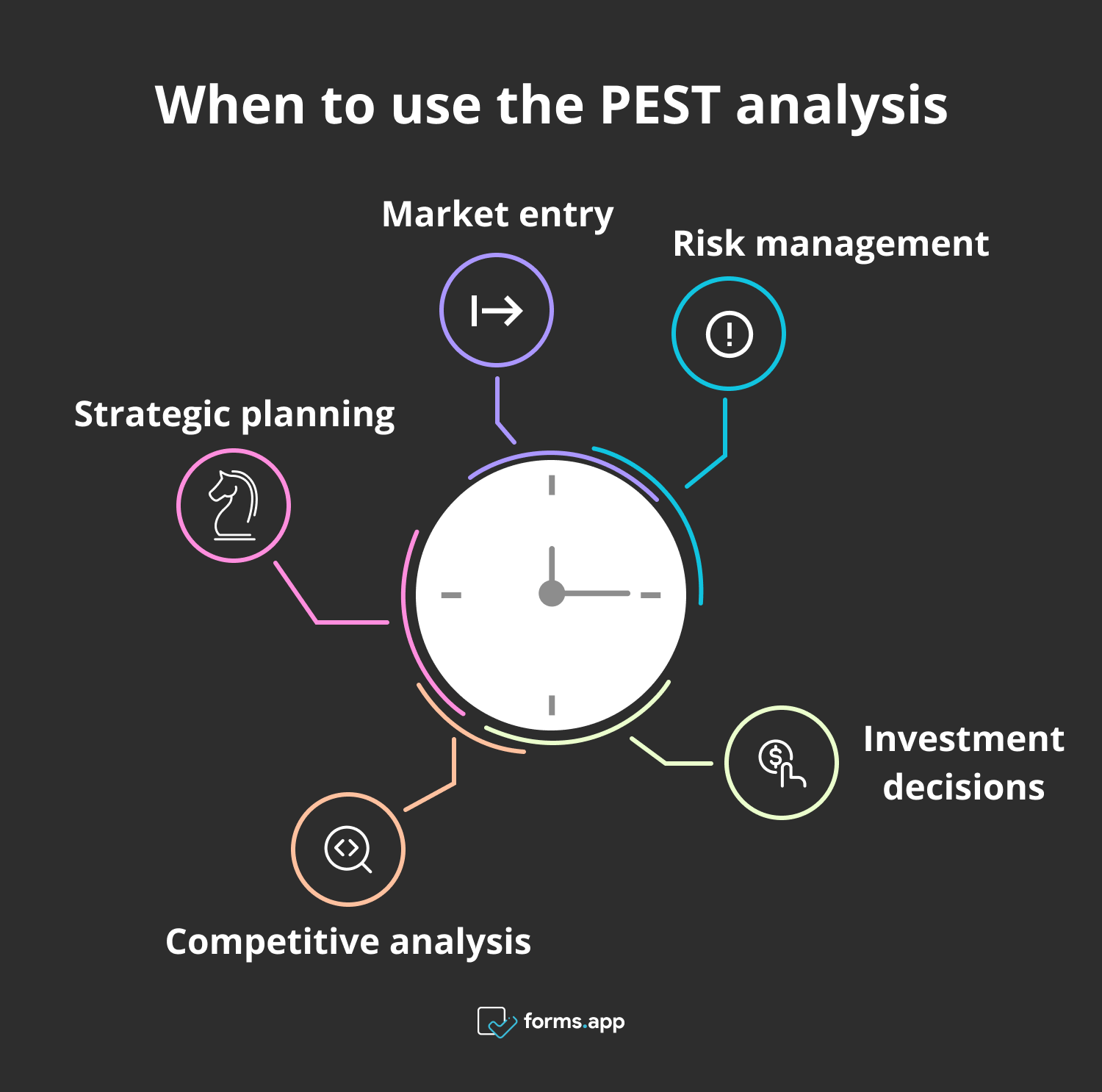
Right times to use the PEST analysis
- Strategic planning: You can use it during strategic planning processes to assess external factors influencing your business objectives.
- Market entry: The PEST analysis may come in handy before entering new markets or launching new products. You can understand the external environment and guess potential challenges.
- Risk management: The companies can benefit from the PEST framework analysis to identify and mitigate risks. Those risks may arise from external factors such as regulatory changes, economic downturns, or technological disruptions.
- Investment decisions: You can use it before making investment decisions. You can evaluate the investment opportunities in different markets or industries.
- Competitive analysis: You can always make comparisons against competitors. You can understand how external factors impact their operations and strategies as well.
Frequently asked questions about the PEST analysis
The PEST analysis is a framework for decision-making and risk mitigation. As we have covered, it involves 4 factors. You need to consider these factors and act accordingly. Then, your company can leverage opportunities and mitigate their risks, giving them a better hand for competition.
Now, let’s look at some of the most frequently asked questions about the analysis:
There are 4 factors in the PEST framework analysis: Political factors, economic factors, social factors and technological factors. Consider these factors and follow compliant policies. This way, you can mitigate risks posed by the business landscape and competitors. It is a valuable tool for organizations to gain a comprehensive understanding of the external factors affecting their business.
PEST analysis is a good model for several reasons. These reasons include strategic planning, risk management, market entry, policy development, and competitive analysis. Companies can also benefit from it by developing strategies that align with market trends and dynamics, gaining an advantage over their competitors.
PEST analysis considers four factors: Political, Economic, Social, and Technological factors. PESTLE analysis, on the other hand, adds legal and environmental factors. It provides a more comprehensive view of external influences on business decisions and strategies. It emerged as an extension of PEST analysis in the late 20th century.
The six elements or factors of the PESTLE analysis are: Political factors, Economic factors, social factors, technological factors, legal factors, and environmental factors. Actually, it is an extension of the PEST analysis. It gained prominence in the latter part of the 20th century, and companies still use it as a strategic tool today.
The PESTLE analysis consists of 6 external and macro-environmental factors. Companies can consider these 6 factors to mitigate risks and leverage opportunities. We can give several examples of factors analyzed in the PESTLE analysis, such as:
- government stability and taxation policies (political),
- inflation rates and exchange rates (economic),
- demographic trends and cultural attitudes (socio-cultural),
- technological advancements and research and development (technological),
- consumer protection regulation and employment laws (legal),
- climate change and environmental regulations (environmental).
Conclusion
To conclude, the PEST analysis is a valuable framework involving the analysis of 4 external factors affecting businesses. Many companies use it today to mitigate their risks and leverage better opportunities for their strategies. It also provides a huge advantage for the organizations against their competitors.
In this article, we have covered the PEST analysis framework in detail. We have seen its advantages, reasons to use it, and how to use it. We also shared its powers in scenario examples and answered some of the most frequently asked questions about it. Use it in your business today to gain many advantages!
Fatih is a content writer at forms.app and a translator specializing in many text domains, including medical, legal, and technical. He loves studying foreign languages. Fatih especially likes to create content about program management, organizational models, and planning tools.
